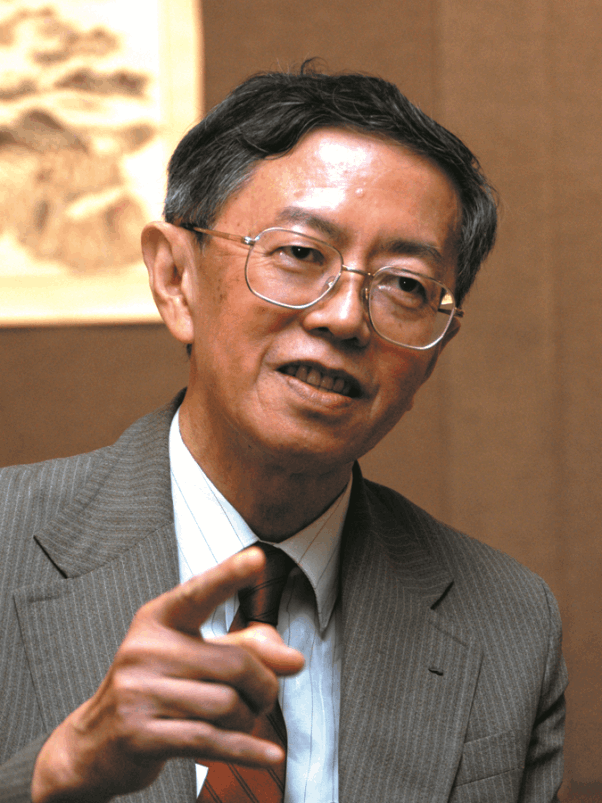
Words from the Chief Editor
Hsu Yun Tsiao, a renowned scholar of Southeast Asian history, was a hardworking and thrifty man who dedicated his whole life to the academics. Until now, there are still many of his achievements which have yet to be explored. After his death, his collection of books was scattered while all his authored works almost disappeared. This was not only a great loss to the academic circles of Southeast Asia but also to the Southeast Asian Chinese community. The community should feel great remorse towards this great scholar.
Under the writer’s suggestion, Soka Gakkai Malaysia (SGM) gladly committed to publishing The Complete Works of Hsu Yun Tsiao, so that the almost-perished academic works could be saved and the scholar’s painstaking efforts preserved. Although the importance of the significance cannot be denied, the spirit and courage displayed warrants even more praise.
First, the author’s works are very rich in content. As a note of interest, Southeast Asia consists of Singapore, Malaysia, Thailand, Indonesia, Philippines and the Indo-Chinese countries. From past to modern histories and geographies, and regardless of which big city or remote village, the author was knowledgeable about them all. He had also studied them all. The topics covered many fields and each topic had its own writings, which is indeed rare among modern Southeast Asian scholars.
Second, the author’s works touch on various fields. Besides literature and history, he also widely read the sciences such as geology, the rubber industry, natural products, astronomy, the calendar system, nautical studies, geographical coordinates, wind direction, medical science, medicinal drugs and so on. He studied almost all the fields and produced significant works on them. Also, in human science, he researched widely on economics, politics, archaeology, ethnology, historical geography, phonology, linguistics, philology, literature and so forth. His discoveries were all recorded in his surprising large number of works. In addition, although the author was not an expert in creative writing, he had a large volume of works focused on old-style poetry, modern poetry, novels, travel notes, essays, prefaces, postscripts, Malay poetry, documentary literature and so on. His wide and rich researches are indeed rare among modern Southeast Asian scholars.
Third, the author penned many works. Those which have not been published into books were published as single articles in different kinds of newspapers, magazines, periodical magazines, commemorative magazines, and local and overseas academic journals. These articles can be found in Singapore, Malaysia, Thailand, Hong Kong and Taiwan. He even used Mandarin, English, Malay, Thai and languages from other countries as the language medium for his works. His publications can be found in any paper, anytime, anywhere and in any type of language; which is indeed rare among modern Southeast Asian scholars.
Fourth, in terms of the amount of his voluminous works, the author has written more than one thousand articles, including long essays, short journals and photographs. In terms of word count, his works exceed the millions. The numbers were so high - tens or even hundreds of times more than his published books - which is indeed rare among modern Southeast Asian scholars.
The four points mentioned above can be said to portray the uniqueness of the author’s works. Faced with these complicated issues, the collection and compilation tasks were never easy. Tasks such as re-typing, typesetting and proofreading were also very difficult and arduous. All these hardships cannot be described in a few words. However, as always, Soka Gakkai Malaysia has never retreated; they kept on advancing bravely for the sake of the academics and the Chinese society. This is truly admirable.
After the complete works were compiled, the editorial committee released news for the second time, urging people from the community to assist in collecting some of the long-lost articles. After the typesetting for the complete works was done, the committee began proofreading, assisted by other parties, to minimise the errors.
In compiling the works, we received a lot of help and support from my close friends, Dr. Choi Kwai Keong and Dr. Lew Bon Hoi. I hereby express my deepest gratitude to both of them. I would also like to show my gratitude to the Southern College’s Research Institute of Chinese Ethnicity and Culture and students from the Chinese Department.
Tay Lian Soo
May 2008, at Southern College’s Research Institute of Chinese Ethnicity and Culture